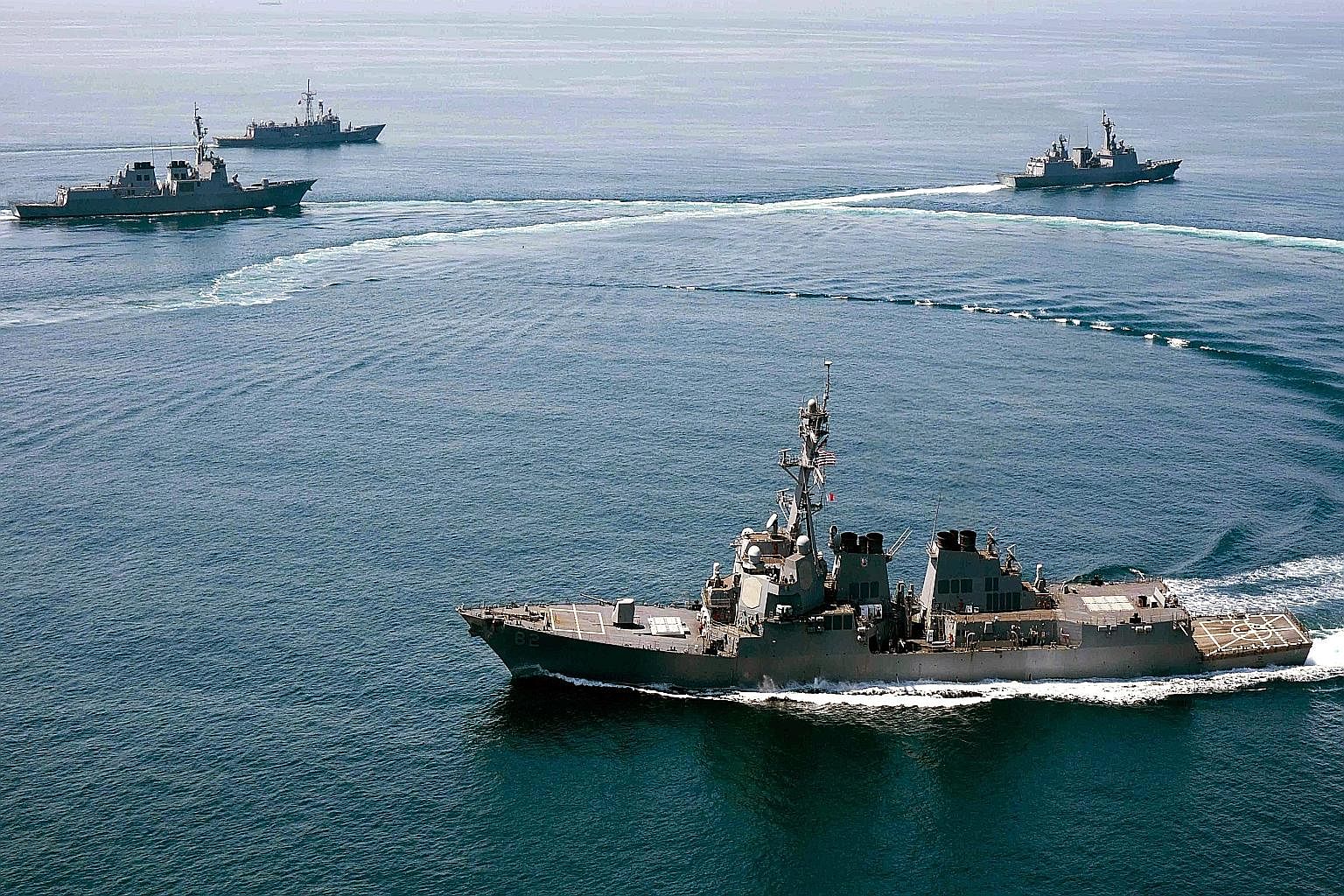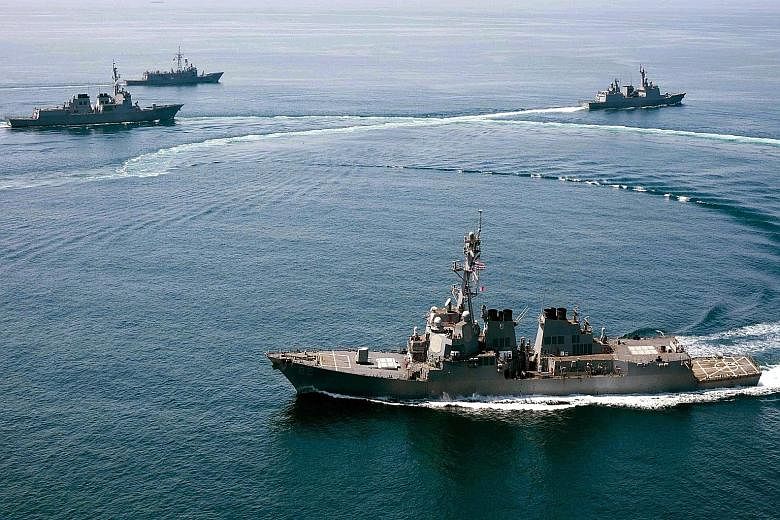In a setback for China, the Permanent Court of Arbitration based in The Hague ruled last Thursday that it has jurisdiction to hear the case brought by the Philippines over disputed islands in the South China Sea. This unfavourable, albeit expected, ruling for China coincidentally took place a few days after Washington sent a guided-missile destroyer, the USS Lassen, to patrol within 12 nautical miles of the Mischief and Subi reefs, which have been central to China's controversial reclamation activities in the South China Sea. How should we expect the United States and China to respond to these developments?
Apart from the hype in the Chinese media, China's official responses to the USS Lassen incident thus far have been fairly muted, and largely limited to diplomatic protests. The US and Chinese navy chiefs held talks almost immediately after the incident. Both sides agreed to maintain dialogue and continue with high-level bilateral visits and port calls as scheduled. Of note, Commander of the US Pacific Command, Admiral Harry Harris, is expected to visit China this week, and he will likely work towards further reducing tensions between China and the US.
These are all positive and mature gestures from the US and China, but the South China Sea is rapidly evolving into a big power game. With many other policy priorities, neither the US nor China will allow the South China Sea issue to jeopardise overall bilateral relations. Without a doubt, the US must assure its allies in this region and also continue to assert its freedom of navigation rights in order to avoid giving China tacit consent to changing international norms. China is also certainly unhappy about the US' actions, which it perceives as targeted at China, especially since the USS Lassen incident came so shortly after Chinese President Xi Jinping's state visit to the US. Nonetheless, both sides are keen to not let this issue blow up. What we see, therefore, are the US and China walking a very fine line, and engaging in diplomatic signalling, mixed with friendly gestures to manage the situation.

In the months to come, however, China and the US are likely to be forced to adopt a more assertive posture as a result of domestic pressure. The Chinese nationalistic public are already urging officials to be more aggressive in their policies. The US' engagement strategy towards China will also evolve into a heated topic for discussion as the 2016 US presidential campaign gets under way.
With the two big powers reluctant to directly confront each other, especially on the South China Sea issue, they are likely to step up bilateral engagement with Asean member-states to indirectly push for their respective agendas. Regional countries are therefore caught in the middle of this big power game. Following the decision made by The Hague-based tribunal, additional hearings will be held to determine the merits of the Philippines' arguments. This will have a further impact on the legitimacy of China's claims in the South China Sea, even as China refuses to participate in the hearings. China cannot afford to do nothing, and will increase its efforts to prevent a united Asean front on the South China Sea issue, which China sees as detrimental to its interests. The US is likely to similarly encourage its regional allies to hold firm against China, despite its continued emphasis that the US takes no position in competing sovereignty claims in the South China Sea.
All is not lost for Asean. The key for Asean members is to stay united and emphasise to both the US and China that neither of their respective interests can drive Asean's agenda. Asean members need to believe that neither the US nor China can afford to push Asean into a corner. The US is aware that it will need to back up its rhetoric on rebalancing to the Asia-Pacific region with actual substance, or lose its credibility and influence in this region. China, on the other hand, is now keen to build a Maritime Silk Road through South-east Asia. This is likely to take policy priority, and the Chinese government will want to manage nationalistic sentiments over maritime disputes in the South China Sea in order to avoid being pushed down a path that it does not want to travel. China is also keenly aware that it will need to prevent having an anti-China alliance from forming in the region, which will severely jeopardise its foreign policy and economic interests.
The largest worry now is if Asean members believe in the "big powers' bluff", and start caving in to rhetorical pressures from either the US or China, at the expense of Asean's unity and long-term sustainability. We have witnessed this in 2012, when Asean - for the first time in its 45-year history - failed to issue a joint communique as a result of some states' attempts to keep the South China Sea issue off Asean's agenda. As a regional grouping, Asean cannot, and should not, take sides on the merits of claims in the South China Sea. Nonetheless, maritime disputes in the South China Sea is a major security issue in the region, with several Asean members being claimants to the islands. Asean's credibility as a regional grouping will be severely questioned by the international community if it fails to maintain a united front, and engage in a constructive discussion on this issue.
What remains to be seen, therefore, is Asean's responses to what will inevitably be increasing pressures from the US and China on various issues relating to the South China Sea. This will include, but certainly not be limited to, freedom of navigation patrols similar to that of the USS Lassen incident, negotiations on the Code of Conduct, as well as the Philippines' arbitration case against China. The South China Sea will become an important litmus test for Asean, and will determine the dynamics of Asean's relationship with the big powers. In this regard, Asean members should keep in mind that their responses to the US and Chinese pressures over issues relating to the South China Sea will in the long term shape the future trajectory of Asean. Caving in to either side for short-term interests will only result in Asean losing its unity and credibility. The South China Sea, and this entire region, will truly become a playground for the big powers if this happens.
- The writer is a PhD candidate at the S. Rajaratnam School of International Studies, Nanyang Technological University, and a Senior Visiting Student at Peking University School of International Studies in Beijing.

